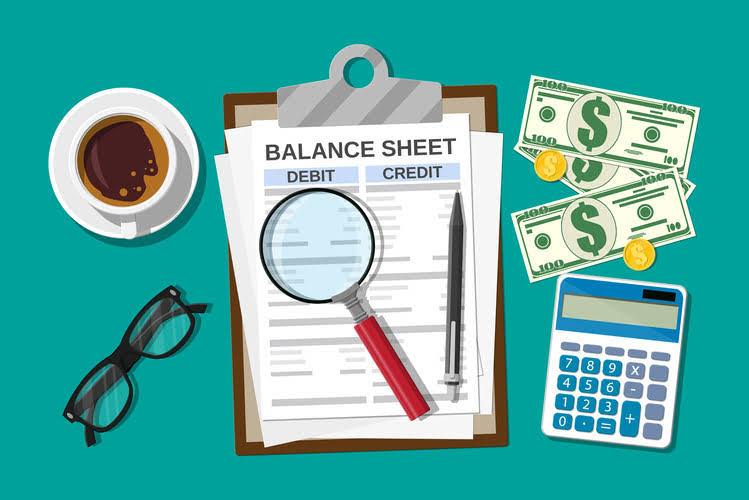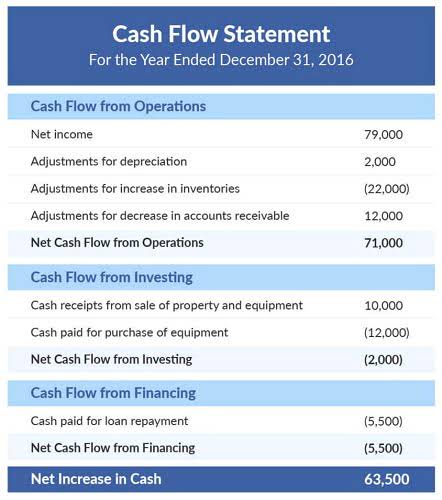Content Pension Liabilities Unearned Revenue What Is Long Term Debt Ltd? How Liabilities Work Examples Of Current Liabilities Debt Ratio: Accountingtools Business Types Of Liabilities: Contingent Liabilities What Is A Current Liability? It contains Pension liabilities, in addition to debt and deferred taxes. Pfizer’s commitments under a capital lease are not significant and are thus […]
Content
It contains Pension liabilities, in addition to debt and deferred taxes. Pfizer’s commitments under a capital lease are not significant and are thus not described separately here. Deferred Tax LiabilityDeferred tax liabilities arise to the company due to the timing difference between the accrual of the tax and the date when the company pays the taxes to the tax authorities. This is because taxes get due in one accounting period but are not paid in that period. For lease contracts of over one year, the lessee records a long-term liability equaling the present value of lease obligations.

This is the obligation of a business to remit sales taxes to the government that it charged to customers on behalf of the government. If the amount of a company’s debt is greater than its assets, it could be a sign that the company is in bad financial shape and may have difficulty repaying what it owes. Though lease agreements are often categorized as long-term debt, payments that are due within the year are considered short-term debt. These loans often arise when a company sees an immediate need for operating cash. These are potential obligations that may arise depending on how a future event plays out.
The present value of a lease payment that extends past one year is a long-term liability. Deferred tax liabilities typically extend to future tax years, in which case they are considered a long-term liability. Mortgages, car payments, or other loans for machinery, equipment, or land are long term, except for the payments to be made in the coming 12 months. The portion due within one year is classified on the balance sheet as a current portion of long-term debt. The cluster of liabilities comprising current liabilities is closely watched, for a business must have sufficient liquidity to ensure that they can be paid off when due.
Pension Liabilities
However, their prominently distinguishable feature is the shorter maturity of treasury issues—the U.S. Treasury, for example, issues notes with maturities of 2, 3, 5, 7, and 10 years, while bonds are issued for longer terms as well. A liability is something that is owed to or obligated to someone else. It can be real (e.g. a bill that needs to be paid) or potential (e.g. a possible lawsuit).
Two of the most common types of contingent liabilities are lawsuits and product warranties. As mentioned before, contingent liabilities are not as common but they do come up occasionally and it is good to understand the basics of them.
- Equity represents ownership of a company, and does not include any agreed upon repayment terms.
- (Your broker can help you find these. If you don’t have a broker yet, head on over to our Broker Center, and we’ll help you get started.) Business debt is typically categorized as operating versus financing.
- Here’s what you need to know about the different types of debt companies may take on.
- By understanding your liabilities and tracking them properly, you reduce the risk of loss from not paying the liabilities on time.
- Another way to prevent getting this page in the future is to use Privacy Pass.
Liabilities are categorized as current or non-current depending on their temporality. They can include a future service owed to others (short- or long-term borrowing from banks, individuals, or other entities) or a previous transaction that has created an unsettled obligation.
Unearned Revenue
If companies cannot repay their long-term liabilities as they become due, the company will face a solvency crisis. For example, if Company X’s EBIT is 500,000 and its required interest payments are 300,000, its Times Interest Earned Ratio would be 1.67. If Company A’s EBIT is 750,000 and its required interest payments are 150,000, itsTimes gross vs net Interest Earned Ratio would be 5. Earnings before Interest and Taxes can be calculated by taking net income, as reported on a company’s income statement, and adding back interest and taxes. A company will eventually default on its required interest payments if it cannot generate enough income to cover its required interest payments.

In return, investors are compensated with an interest income for being a creditor to the issuer. Bills payable is a synonym of accounts payable, or short-term borrowing by banks from other banks. “Accounts payable” refers to an account within the general ledger representing a company’s obligation to pay off a short-term debt to its creditors or suppliers. Companies of all sizes finance part of their ongoing long-term operations by issuing bonds that are essentially loans from each party that purchases the bonds.
This is current assets minus inventory, divided by current liabilities. The balance sheet is one of the three fundamental financial statements. The financial statements are key to both financial modeling and accounting. Are liabilities that may occur, depending on the outcome of a future event. For example, when a company is facing a lawsuit of $100,000, the company would incur a liability if the lawsuit proves successful.
What Is Long Term Debt Ltd?
Non-current liabilities, on the other hand, don’t have to be paid off immediately. Like businesses, an individual’s or household’s net worth is taken by balancing assets against liabilities. For most households, liabilities will include taxes due, bills that must be paid, rent or mortgage payments, loan interest and principal due, and so on. If you are pre-paid for performing work or a service, the work owed may also be construed as a liability.
- Deferred Tax LiabilityDeferred tax liabilities arise to the company due to the timing difference between the accrual of the tax and the date when the company pays the taxes to the tax authorities.
- A contingent liability is an obligation that might have to be paid in the future, but there are still unresolved matters that make it only a possibility and not a certainty.
- Kirsten Rohrs Schmitt is an accomplished professional editor, writer, proofreader, and fact-checker.
- Long-term liabilities are debts that do not need to be paid within a 12 month period .
- Learn financial modeling and valuation in Excel the easy way, with step-by-step training.
- If your company wins the lawsuit or it is dropped, then no liability would arise.
Long‐term liabilities are existing obligations or debts due after one year or operating cycle, whichever is longer. They appear on the balance sheet after total current liabilities and before owners’ equity.
How Liabilities Work
Standard & Poor’s is a credit rating agency that issues credit ratings for the debt of public and private companies. As part of their analysis Standard & Poor’s will issue a credit rating that is designed to give lenders and investors an idea of the creditworthiness of the borrower. Please consult the figure as an example of Standard & Poor’s credit ratings issued for debt issued by governments all over the world. Analyzing long-term liabilities combines debt ratio analysis, credit analysis and market analysis to assess a company’s financial strength.

Long-term debt-to-assets ratios only take into consideration a company’s long-term liabilities, whereas the total debt-to-assets ratio includes any debt that the company has accumulated. For example, in addition to debt like mortgages, a total debt-to-asset ratio also includes short-term debts like utilities and rent, as well as any loans that are due in less than 12 months. These assets include tangible assets like equipment as well as intangible assets like accounts receivable. Long-term liabilities are important for analyzing a company’s debt structure and applying debt ratios. These long-term financial obligations are also useful when compared with a company’s equity, as you can compare them with historical financial records and analyze the changes that have occurred over time. Understanding how best to navigate your balance sheet—such as its long-term financial obligations—can help you accurately assess the financial status of your business.
She has expertise in finance, investing, real estate, and world history. Kirsten is also the founder and director of Your Best Edit; find her on LinkedIn and Facebook. Adam Hayes is a financial writer with 15+ years Wall Street experience as a derivatives trader. Besides his extensive derivative trading expertise, Adam is an expert in economics and behavioral finance. Adam received his master’s in economics from The New School for Social Research and his Ph.D. from the University of Wisconsin-Madison in sociology. He is a CFA charterholder as well as holding FINRA Series 7 & 63 licenses.
Examples Of Current Liabilities
All long-term liabilities are due more than one year into the future and are often referred to as non-current liabilities. This type of short term liability is only used if you are using the accrual method of accounting. Liabilities are debts that a company plans on paying with the expectation that its future cash flow will be more than substantial to account for the balance owed as well as any interest incurred. In other words, liabilities are debts that your business owes as a result of past events or transactions and just like assets, liabilities are part of doing business. Many business leases extend beyond a 12-month period, which is why they’re often classified as long-term debt. Interest Coverage Ratio is a financial ratio that is used to determine the ability of a company to pay the interest on its outstanding debt.
Almost every single business is going to have some sort of liability at some point in it’s life span. These are expenses not yet payable to a third party, but already incurred, such as wages payable. These are short-term advances made by the bank to offset any account overdrafts caused by issuing checks in excess long term liability example of available funding. These are generally issued to the general public and payable over the course of several years. Here’s what you need to know about the different types of debt companies may take on. Gain the confidence you need to move up the ladder in a high powered corporate finance career path.
Ratios like current ratio, working capital, and acid test ratio compare debt levels to asset or earnings numbers. Not all income is paid to you with immediacy in mind; some may be paid in time to come. So long as the expected time to receive these revenues is more than one year, these items belong in the deferred revenues account. This may include monies owed to your business from other corporations or even a delay in the processing of existing funds. Funds due to you that have yet to be paid will be accounted for in this section. Any outstanding bonds that the government has yet to repay to your business will be accounted for in this section. Seen more so as an investment than a liability, this is still recorded as a liability because the money has yet to be repaid.
Debt Ratio:
If a company’s Times Interest Earned Ratio falls below 1, the company will have to fund its required interest payments with cash on hand or borrow more funds to cover the payments. Typically, a Times Interest Earned Ratio below 2.5 is considered a warning sign of financial distress.

It is important to consider these off-balance-sheet-financing arrangements because they have an immediate impact on a company’s overall financial health. Long Term DebtLong-term debt is the debt taken income summary by the company that gets due or is payable after one year on the date of the balance sheet. It is recorded on the liabilities side of the company’s balance sheet as the non-current liability.
Accountingtools
Bonds payable are always considered a long-term liability and they are often issued by hospitals, local governments or utilities. While taxes are usually considered a short-term liability, there are times where they need to be deferred for longer than a year. Some common examples of notes payable could be the purchase of a company car or a loan from a bank. Notes payable is very similar to accounts payable except for the length of the terms for payment.

A liability is not recognized on the lessee’s balance sheet even though the lessee has the obligation to pay an agreed upon amount in the future. Calculating a company’s debt to equity ratio is straight forward, and the debt and equity components can be found on a company’s respective balance sheet. For more advanced analysis, financial analysts can calculate a company’s debt to equity ratio using market values if both the debt and equity are publicly traded. Benchmarking a company’s credit rating and debt ratios will assist an analyst in determining a company’s financial strength relative to its peers. Current obligations are much more risky than non-current debts because they will need to be paid sooner. The business must have enough cash flows to pay for these current debts as they become due.
All other liabilities are reported as long-term liabilities, which are presented in a grouping lower down in the balance sheet, below current liabilities. Long Term Debt is classified as a non-current liability on the balance sheet, which simply means it is due in more than 12 months’ time. The LTD account may be consolidated into one line-item and include several different types of debt, or it may be broken out into separate items, depending on the company’s financial reporting and accounting policies. Long-term liabilities are obligations that are due at least one year into the future, and include debt instruments such as bonds and mortgages. Analyzing long-term liabilities is done for assessing the likelihood the long-term liability’s terms will be met by the borrower.
Management Analysis In Applying Financial Ratios
The process repeats until year 5 when the company has only $100,000 left under the current portion of LTD. In year 6, there are no current or non-current portions of the loan remaining. The higher the Times Interest Earned Ratio, the better, and a ratio below 2.5 is considered a warning sign of financial distress.
- Get CFI’s CBCA™ certification and become a Commercial Banking & Credit Analyst.
- Her expertise covers a wide range of accounting, corporate finance, taxes, lending, and personal finance areas.
- So long as the expected time to receive these revenues is more than one year, these items belong in the deferred revenues account.
- Principle and Interest Payable represents any payments due towards the payment of a mortgage or loan.
- If you are pre-paid for performing work or a service, the work owed may also be construed as a liability.
- The Debt-to-Equity Ratio is a financial ratio indicating the relative proportion of shareholder ‘s equity and debt used to finance a company’s assets, and is calculated as total debt / total equity.
The lesser agrees to transfer the ownership rights to the lessee once the lease period is completed, and it is generally non-cancellable and long-term in nature. Liabilities are a vital aspect of a company because they are used to finance operations and pay for large expansions.
Business
A Debenture is an unsecured debt or bonds that repay a specified amount of money plus interest to the bondholders at maturity. A debenture is a long-term debt instrument issued by corporations and governments to secure fresh funds or capital. An example of off-balance-sheet financing is an unconsolidated subsidiary. A parent company may not be required to consolidate a subsidiary into its financial statements for reporting purposes; however the parent company may be obligated to pay the unconsolidated subsidiaries liabilities. Off-Balance-Sheet-Financing represents rights to use assets or obligations that are not reported on balance sheets to pay liabilities. Debt is typically a long-term liability that represents a company’s obligation to pay both principal and interest to purchasers of that debt. Businesses try to finance current assets with current debt and non-current assets with non-current debt.
See below for the balance sheet reporting treatment of the current and long-term liability portions of the Note Payable from initiation to final payment. If a classified balance sheet is being utilized, the current portion of the long-term liability, if any, needs to be backed out and reclassified as a current liability. Debts that become due more than one year into the future are reported as long-term liabilities on the balance sheet. These are loans that will take more than 12 months to repay, known for their large principal amount and often their likelihood to accumulate interest to be paid over a period of time. A continual decrease in a company’s debt-to-assets ratio can mean that the organization is increasingly less dependent on using debt to fund business growth.
- The current portion of long-term debt is separated out because it needs to be covered by more liquid assets, such as cash.
- Analyzing long-term liabilities combines debt ratio analysis, credit analysis and market analysis to assess a company’s financial strength.
- The financial statements are key to both financial modeling and accounting.
- Like businesses, an individual’s or household’s net worth is taken by balancing assets against liabilities.
- The returns an equity holder can achieve have unlimited upside, however, they are typically the last to be paid in the event of a bankruptcy.
A long-term liability is an obligation resulting from a previous event that is not due within one year of the date of the balance sheet (or not due within the company’s operating cycle if it is longer than one year). Companies will segregate their liabilities by their time horizon for when they are due.
Analysts will sometimes use EBITDA instead of EBIT when calculating the Times Interest Earned Ratio. EBITDA can be calculated by adding back Depreciation and Amortization expenses to EBIT. In order to obtain assets used in operations, a company will raise capital through either issuing shareholder’s equity (e.g., publicly traded common stock) or debt (e.g., notes payable). Stakeholders, which include investors and lending institutions, provide companies with capital with an expectation that those companies generate net income through their respective operations. Analyzing long-term liabilities often includes an assessment of how creditworthy a borrower is, i.e. their ability and willingness to pay their debt.
Finance LeasesFinance lease simply refers to a method of providing finance in which the leasing company purchases the asset on behalf of the user and rents it to him for a set period of time. The leasing company is referred to as the lessor, and the user is referred to as the lessee. For example, if a company has more expenses than revenues for the past three years, it may signal weak financial stability because it has been losing money for those years.
As a practical example of understanding a firm’s liabilities, let’s look at a historical example using AT&T’s balance sheet. Liability may also refer to the legal liability of a business or individual. For example, many businesses take out liability insurance in case a customer or employee sues them for negligence. Kirsten Rohrs Schmitt is an accomplished professional editor, writer, proofreader, and fact-checker.
Long-term debt may be either secured i.e., backed by collateral or unsecured.
Current liabilities are used as a key component in several short-term liquidity measures. Below are examples of metrics that management teams and investors look at when performing financial analysisof a company. Off-Balance-Sheet-Financing represents financial rights or obligations that a company is not required to report on their balance sheets. “Notes payable” and ” Bonds payable” are common examples of long-term liabilities. Lease PaymentsLease payments are the payments where the lessee under the lease agreement has to pay monthly fixed rental for using the asset to the lessor. The ownership of such an asset is generally taken back by the owner after the lease term expiration. Capital LeaseA capital lease is a legal agreement of any business equipment or property equivalent or sale of an asset by one party to another .
A healthy debt-to-assets ratio can vary according to the industry the business is in. However, ratios that are less than 0.5 are generally considered to be good. When PBO exceeds the fair value of plan assets, the plan is said to be ‘underfunded,’ and such excess amount is recorded as a pension liability in the employer’s balance sheet. DebenturesDebentures refer to long-term debt instruments issued by a government or corporation to meet its financial requirements.
What Is A Current Liability?
These are the trade payables due to suppliers, usually as evidenced by supplier invoices. These are bonds with a feature that allows holders to redeem them for shares of common stock. Founded in 1993 by brothers Tom and David Gardner, The Motley Fool helps millions of people attain financial freedom through our website, podcasts, books, newspaper column, radio show, and premium investing services. Mortgages – These are loans that are backed by a specific piece of real estate, such as land and buildings.
Examples of long‐term liabilities are notes payable, mortgage payable, obligations under long‐term capital leases, bonds payable, pension and other post‐employment benefit obligations, and deferred income taxes. The values of many long‐term liabilities represent the present value of the anticipated future cash outflows. Present value represents the amount that should be invested now, given a specific interest rate, to accumulate to a future amount. There is more to analyzing long-term liabilities than simply reading a company’s credit rating and performing independent debt ratio analysis. In addition, an analyst needs to consider the overall economy, industry trends and management ‘s experience when forming a conclusion about the strength or weakness of a company’s financial position.
Author: Michael Cohn
veja mais

